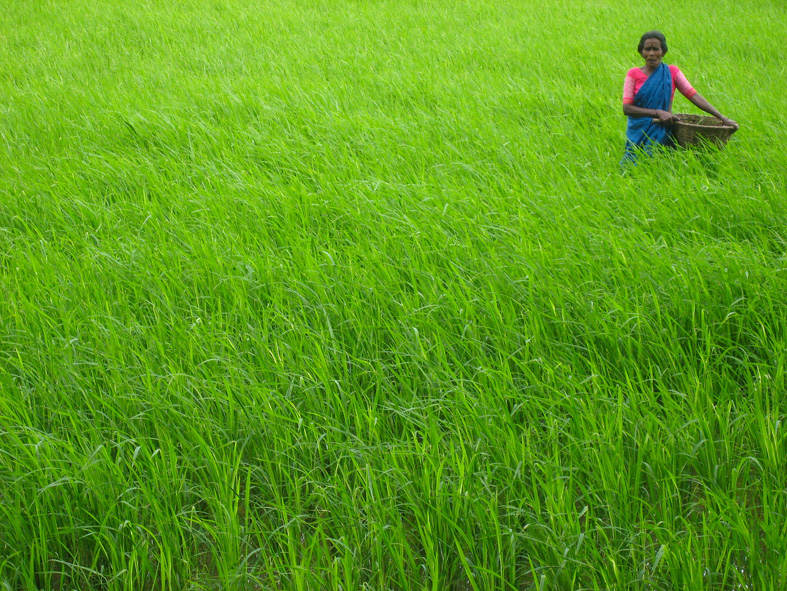
Filmstar and member of parliament, Hema Malini, blamed the recent Kamala Mills fire tragedy, on India’s population and migrants. She was quoted in a Zee News report as saying: “The population is so high. When Mumbai ends, another city should begin. But the city keeps extending. Uncontrollable… The administration has allowed every migrant to live in the city. However, looking at the wide population in the city, the authorities should have brought in some restrictions here to control the population.”
Of course, migration and population, had nothing to do with the Kamala Mills fire. It had everything to do with the collapse of governance that Mumbai (or for that matter most Indian cities) has seen over the years.
Having said that migration is a huge issue that many Indian cities are facing. In fact, as a recent discussion paper titled Changing Structure of Rural Economy of India Implications for Employment and Growth, authored by Ramesh Chand, SK Srivastava and Jaspal Singh, and published by the NITI Aayog, points out: “As per the 2011 Census, 68.8 per cent of country‟s population and 72.4 per cent of workforce resided in rural areas. However, steady transition to urbanization over the years is leading to the decline in the rural share in population, workforce and GDP of the country. Between 2001 and 2011, India‟s urban population increased by 31.8 per cent as compared to 12.18 per cent increase in the rural population. Over fifty per cent of the increase in urban population during this period was attributed to the rural-urban migration and re-classification of rural settlements into urban.”
The question is why is this happening. The answer is fairly straightforward. Agriculture, as a profession, is not as remunerative as it used to be. The average size of the land farmed by an Indian farmer has fallen over the decades and in 2010-2011, the last time the agriculture census was carried out, stood at 1.16 hectares. In 1970-1971 it had stood at 2.82 hectares. This has happened as land has been divided across generations. This fall in farm size has made farming in many parts of the country, an unviable activity, leading to the size of agriculture as a part of the economy becoming smaller and smaller, without a similar fall in the number of people who continue to be dependent on it.
In fact, the situation could have only got worse since 2010-2011, as farm sizes would have shrunk further. Further, there are states like Kerala and Bihar, where the farm sizes are smaller than the average 1.16 hectares across India.
The NITI Aayog discussion paper points out that in 2011-2012, agriculture contributed 39.2 per cent of the rural economic output, while employing 64.1 per cent of the rural workforce. In 2004-2005, agriculture had contributed 38.9 per cent of rural economic output, while employing 72.6 per cent of the rural workforce.
What this basically means is that between 2004 and 2012, many rural workers essentially moved away from agriculture to other areas. Many would have migrated to cities for better opportunities as well.
What it also shows is that way too many people continue to remain dependent on agriculture. The sector has what economists refer to as huge disguised unemployment. If we look at the national level, agriculture contributes around 12 per cent of the gross domestic product (a measure of economic output), while employing 47 per cent of the workforce.
This clearly means that those working in agriculture are worse off than those not working in agriculture. In fact, the NITI Aayog discussion paper points out that the average urban worker made around 8.3 times the money an average agricultural worker does. The average urban worker makes 3.7 times the money an average cultivator does.
Given this, huge difference in income, it is not surprising that people want to migrate from villages to cities. Another data point that adds to this trend is the fact that only around half of the rural workforce looking for a job all through the year, is able to find one. In urban India, this is more than 80 per cent.
Given this, many people need to be moved from agriculture into other activities. The NITI Aayog discussion paper points out: “To match employment share with output share of agriculture another 84 million agricultural workers are required to quit agriculture and join more productive non-farm sectors. This amounts to about 70 per cent increase in the non-farm jobs in rural areas.”
What all these factors come together to tell us is that it is surprising that more people not moving to urban areas from rural areas, given the huge difference of income between rural and urban workers and the fact that there is a huge disguised unemployment in agriculture. Given the limitation of data (with the Census only being carried out once every 10 years), we will come to know the real situation only once the next census is carried out in 2021. But seeing how things are currently, it is safe to say that more people will move from rural to urban areas, than was the case in the past.
The column originally appeared in Daily News and Analysis on January 7, 2018.